
views
Doing a Handstand
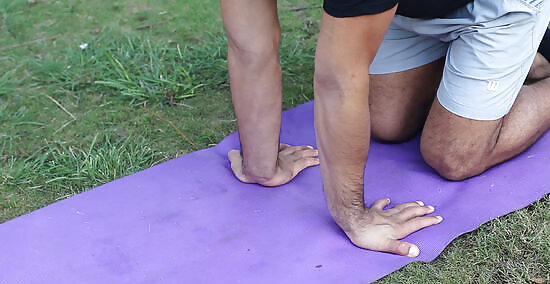
Warm up your body. Warming up by stretching and doing light exercise will help your body feel limber and ready for a physical challenge. Warming up also decreases the chance that you'll end up with an injury. Take five or ten minutes to stretch and warm up using the following techniques: Roll your ankles, wrists and neck to loosen up. Touch your toes, and hold the position for thirty seconds. Repeat three times. Do three sets of ten jumping jacks. Jog around the block (about half a mile).
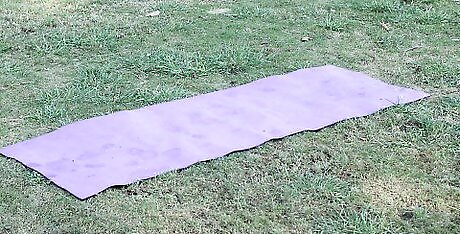
Find a good spot to practice walking on your hands. You want the ground to be lightly padded, since you're sure to fall over a couple of times. Outdoors, look for a grassy flat spot, and be sure to check for rocks and sticks. Indoors, a padded gym floor or carpeted room both work well.
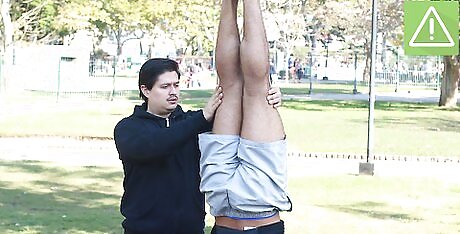
Get a spotter. When you're learning how to do a handstand and walk on your hands, it helps to have someone nearby who can hold your legs in position until you get a feel for how to balance on your hands. Ask a friend to stand next to you while you practice. They should gently hold your legs straight once they're above your head. After practicing for a while, you won't need as much help from your spotter. Ask them to stand back unless you're about to fall over.
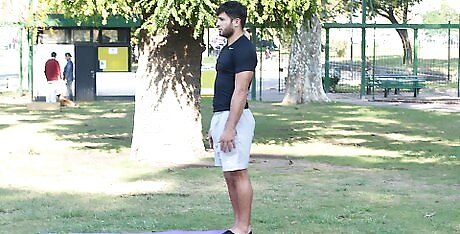
Get into the starting position. Stand up straight with your feet in a comfortable, balanced stance. Hold your arms by your ears, making sure to squeeze tight. Take a large enough step into a lunge.
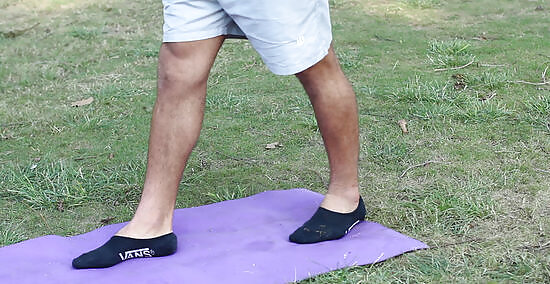
Step forward with your dominant leg. Do a handstand first going into it with your left leg, then your right leg. Whichever leg feels more comfortable for going into it, is your dominant leg. (At least for handstands.) Step straight forward, rather than off to the side, so you can maintain proper balance when you're upright.
Tip your body forward and plant your hands on the ground. As you step, your body should tip over like a see-saw toward the ground in one fluid motion. Plant your hands on the ground so that they are about shoulder-width apart. Do not make the mistake of throwing your hands straight down and trying to throw your legs upward, which can cause you to fall forward. Keep your arms straight. Bending your elbows can result in injury. Keep your shoulders tucked in toward your neck, like you're shrugging.
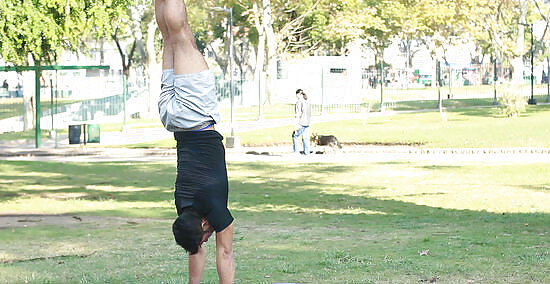
Swing your legs and torso upward. As part of the same fluid motion, use the momentum of your forward tilt to swing your legs up and straighten your body. Keep your back and legs straight, and don't throw your head back. This can cause you to arch your back and injure yourself. Make sure your spotter is close by when you're swinging your legs toward the sky. This is the moment when you are most likely to fall. Keep your legs straight and pressed together. This will help prevent you from falling to the side. Your weight should balance toward your fingers, rather than your wrists.
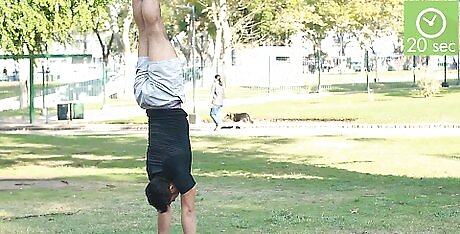
Hold the position for twenty seconds or more. Before you start walking on your hands, you need to learn how to balance in place and gain control over your movements. Keep practicing your handstand until you're able to easily move into position and hold it for at least twenty seconds before rolling out. If you're having trouble getting the hang of it, try walking yourself up a sturdy wall. Get into a plank position with your feet toward the wall. Walk your feet up the wall and move your hands toward the wall until you're upright on your hands, using the wall as a brace. Try gently pushing off the wall so that your body is hand-standing without the wall. Eventually, you'll need to get to the point where you can move into a handstand without using the wall. When you want to exit a handstand, roll out by bending your arms and tucking into a forward roll, or somersault. You can also simply drop your feet back and do a bridge, if you're flexible enough.
Learning to Walk

Choose a roomy location with a soft, flat surface. A park, garden, or gym mat would work well for this exercise. Be sure to allow yourself enough space to perform the move; you need more room than you would for a simple handstand. It can help to have a sturdy wall nearby you can practice walking next to.

Ask a friend to spot you. This person’s job will be to stand a safe distance in front of you to catch and then hold your calves while you're in a handstand and learning to walk on your hands. They can also stand behind you, ready to catch your legs if you start to fall.
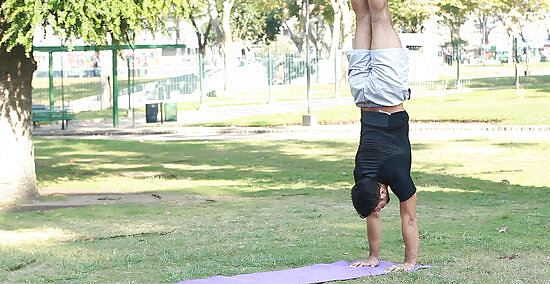
Do a handstand. As you practiced, take a step, tip over at the waist, plant your hands on the ground and move your legs toward the sky in one fluid motion. Point your legs and torso upward and balance on your hands for a few moments.
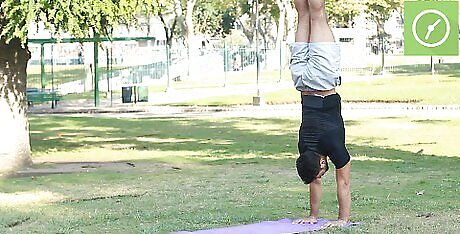
Hold the position. Keep your legs straight up and balance yourself. Hold your legs together for balance and steadiness. Once you’re feeling comfortable, allow your spotter to let go. You may have to stumble around on your hands to keep balance, but that's the first step toward learning to walk. When you're in the handstand position, hold your core tight. Tense up your stomach to keep your back straight, which will help you balance.
Take baby steps. Move one hand forward, leaning slightly in the direction you want to go. You’ve now taken your first hand-step. Move the other hand forward, leaning slightly in the direction you want to go. Little steps are easiest if you are just learning. Do not try to move too quickly, or take big steps. It will be very easy to lose your balance when you're first learning to walk on your hands. Try to move in one single direction, rather than placing your hands wherever they land. Practice controlling where you go.
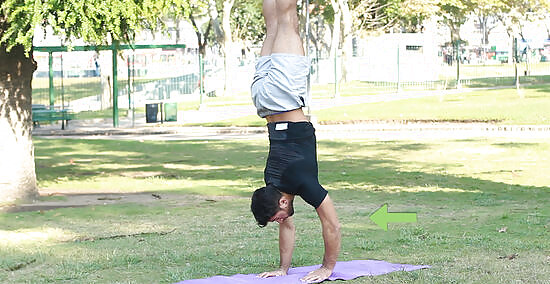
Find your balance. As you start moving around, you'll need to constantly adjust your legs and torso to stay balanced. If you start to tip back in the direction of your stomach, move your legs more over your head. If you move them too far over your head and start tipping over, adjust them again. Upper body strength also plays a role; it helps to quickly readjust your hands to help you regain your balance. If you feel your legs fall back down slightly, use the palm of your hands to move your weight onto your fingertips slightly. If you feel your legs start tipping past your head, use your fingertips to push against the ground as if you were trying to grab a large chunk of dirt. The goal is to find your sweet spot, which means to center your body's weight as directly over your hands as possible. You'll get better at finding this spot with practice.
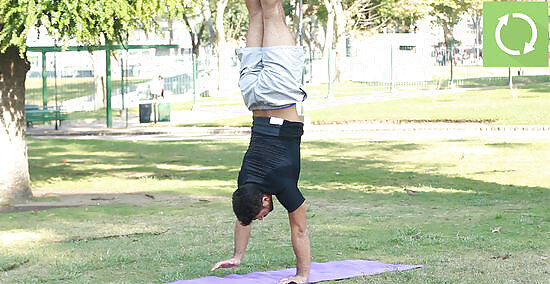
Try the start-stop method. Take small steps with your hands for about twenty seconds, then pause for twenty seconds before moving again. This will help you practice having greater control over your body's movements. Eventually, you will be able to take bigger steps with greater confidence. If you start going too fast, take bigger steps to slow down and regain control. Try the technique of taking steps in the direction that you are falling. Try to keep your hands directly under your feet at all times. When trying to walk forwards, tilt your body forwards slightly and then move your hands to be underneath your body, and repeat. Make sure to tighten your abs and look at your hands; this will help you stay balanced.
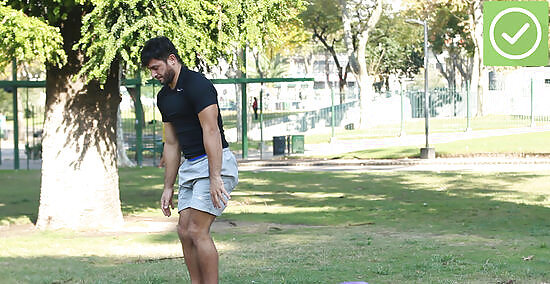
Roll out when you're finished. Bend your arms, tuck in your head and do a somersault. Alternatively, bend your legs back down from the waist and plant your feet on the ground. If you are falling as though you are going to land on your back, you can also bend over into a bridge and slowly let yourself down.















Comments
0 comment